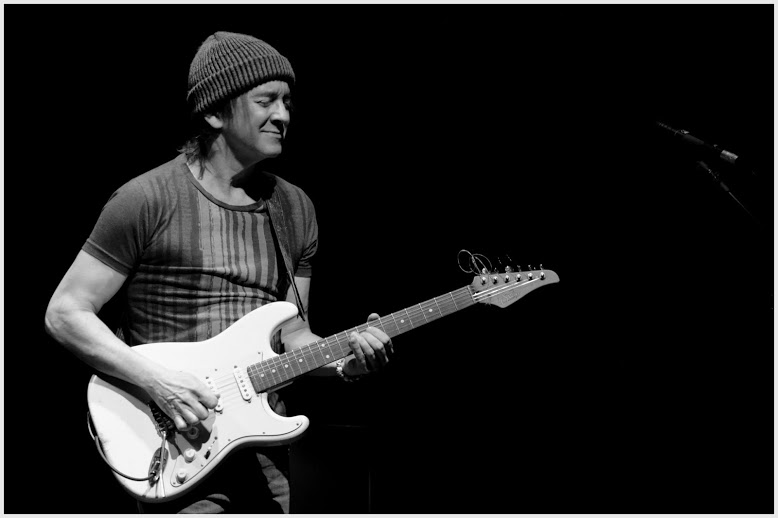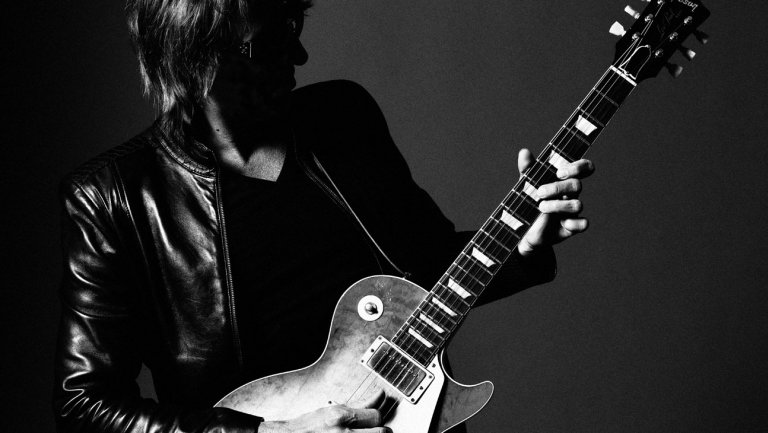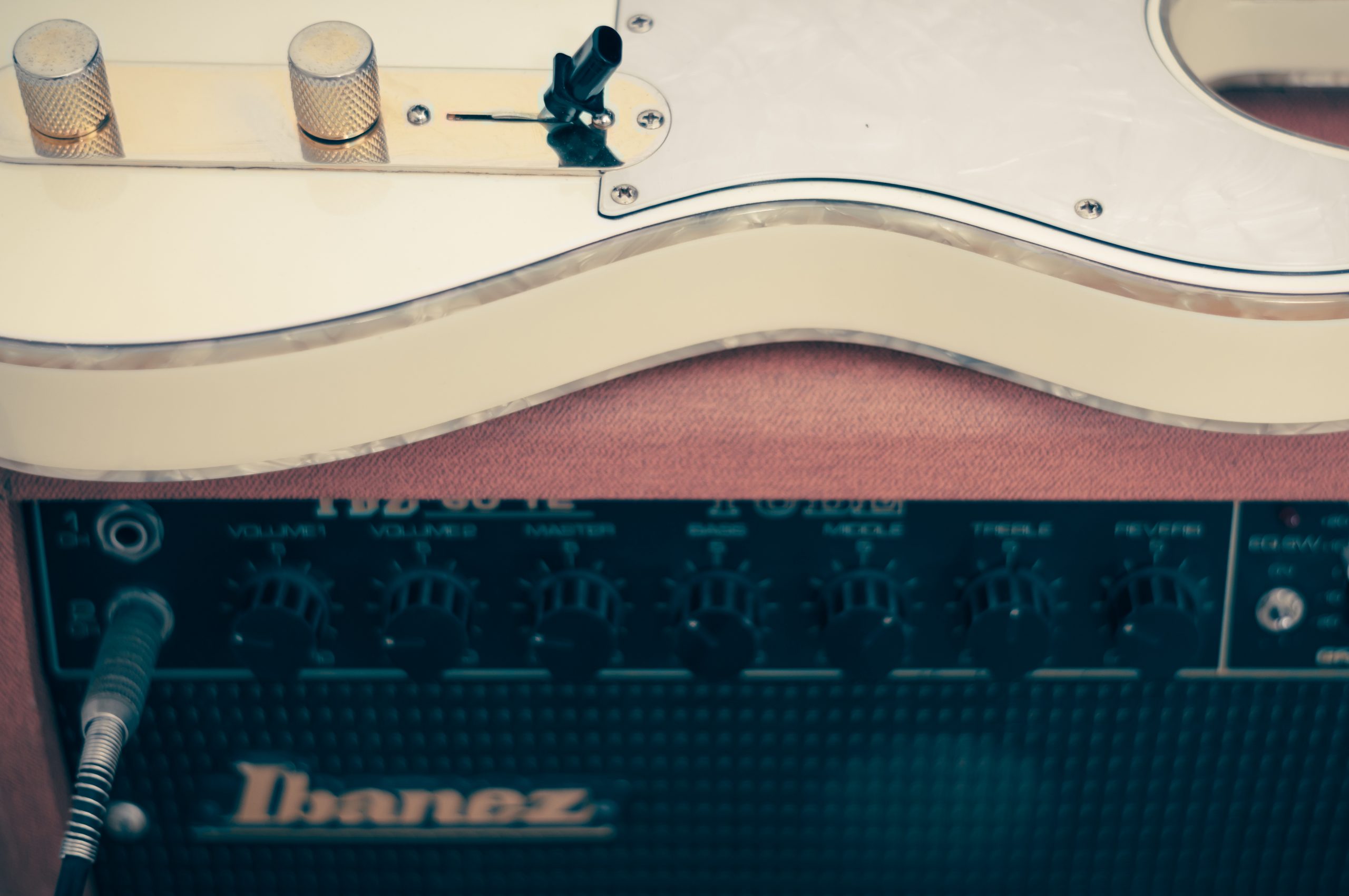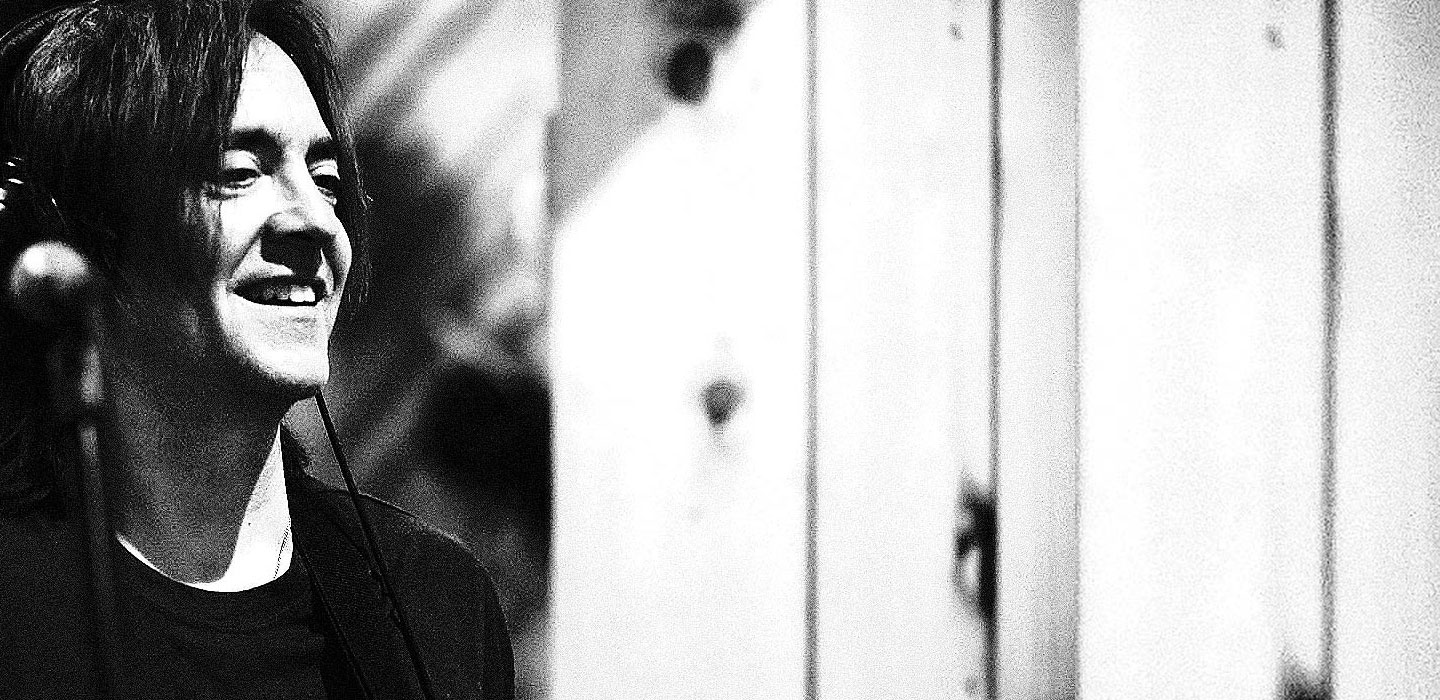Rather like Allan Holdsworth, Krantz sees the neck as one unit as oppose to restrictive CAGED or 3NPS shapes, or any kind of orthodox position playing. This kind of thinking lends itself well to improvisation and the more creatively-inclined player because you see the neck as a grid of possibilities rather than thinking in isolated shapes and boxes. You might be wondering how you get to this point. Imagine the fretboard as that grid of possibilities where in whichever direction you go, you’ll find notes from the scale you’re playing. This means moving horizontally and diagonally around the fretboard as oppose to vertically in boxes. However, this is still not enough because it doesn’t truly free your fingers up. Try the following exercise, which also comes from the Krantz school of thought and is an eye-opener even for players who think they’re beyond shapes and boxes:Pick a scale or key, then choose a four-fret area of the fretboard. Assign one finger to each fret – no position shifts, slides or bends. For example, let’s play the C Major scale from frets 6 to 9. Assign a finger to each fret and play only the available notes from C Major within that four-fret span using one finger per fret.If that didn’t throw you off, you’ve achieved finger independence from patterns. If it did disorientate you, you’ve just found a way to improve your soloing tenfold. It’s interesting because if you’re used to finding notes via patterns, this slight adjustment will throw you right off and trigger your knowledge of either note names or intervals to find the notes, which is what you want at the end of the day. If you’re at all concerned about the chunk of missing information you’ve just discovered, check out this article to learn what to do about it.
The Krantz Thing
If you’ve checked out any Wayne Krantz performances, you’ll no doubt realize that he has this kind of rhythmic, harmonic thing going on where he’s not playing standard chord shapes or standard scale shapes, but kind of blurs the lines between the two, drawing from this holistic approach to carve out intricate voicings, funky grooves, as well as breathtaking licks and runs. In this endeavor he tends to incorporate a lot of open strings, either as parts of lead lines, chords or even as pedal tones.
Where to Start
To get into using open strings in your chord or lead playing, it’s probably better to approach it from the perspective of keys, rather than just using the bottom or top E strings as a drone and playing everything in one key. There are three keys on the guitar that feature all the open strings: C, D, and G.
Here are all the notes in C Major up to the 12th fret:

If you know the key of C well, you’ll be able to imply certain modes with those open strings if you’re playing lead lines. We have E (phrygian), A (aeolian), D (dorian), G (mixolydian), and B (locrian) whose sounds/moods can be implied by leaning heavily on the corresponding open string. You can also combine fretted notes with open strings to get unusual chord voicings, as Krantz does, safe in the knowledge that they’re part of the C Major tonality.
Let’s look at the key of D:

Again, all the open strings are available, and we can now imply E (Aeolian), A (dorian), D (ionian), G (lydian) and B (phrygian). This is also a great tool for coming up with riffs – how many great riffs do you know that use open strings?
Here’s the key of G, which also has all open strings available:
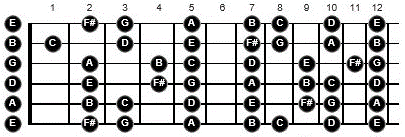
Here we can imply E (aeolian), A (dorian), D (mixolydian), G (ionian), and B (phrygian).
To practice this, think of the open string as your root note rather than using it as a drone.
The key of F is another one that lends itself well to this approach with 5 open strings available:

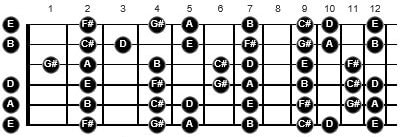
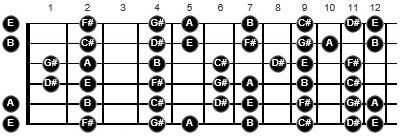
Look at the C Major pattern again, only this time start combining groups of notes with open strings and see what they sound like. You can either do this randomly or premeditatively if you can build chords on the fly from their note names. The key here is to experiment to find what you like, as well as what you don’t like. As we’re sticking within the diatonic scale, whatever group of notes you play will have some resemblance to a diatonic chord from C Major, just not the harmonically stable (nicely stacked in thirds) ones you’re perhaps used to hearing. Try this with the other patterns too.
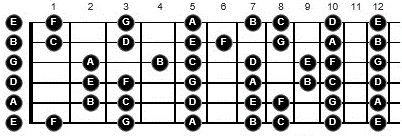
If you’re interested in following the Krantz philosophy, the next step would be to ditch the patterns all together in favor of finding notes through formulas. A formula can be anything from a combination of 2 notes up to 10 or 11 in the Krantz system. So, instead of learning a pattern for something like the Lydian b7 scale, you’d learn the formula (1, 2, 3, #4, 5, 6, b7), choose a root, then start coming up with chords and runs using intervals/note names to find your way around the neck. Sounds like a ton of work? I won’t lie to you – it is but the more you do it the quicker you’re able to apply a formula to the fretboard and get results because your knowledge of intervals in relation to a given note deepens considerably.
